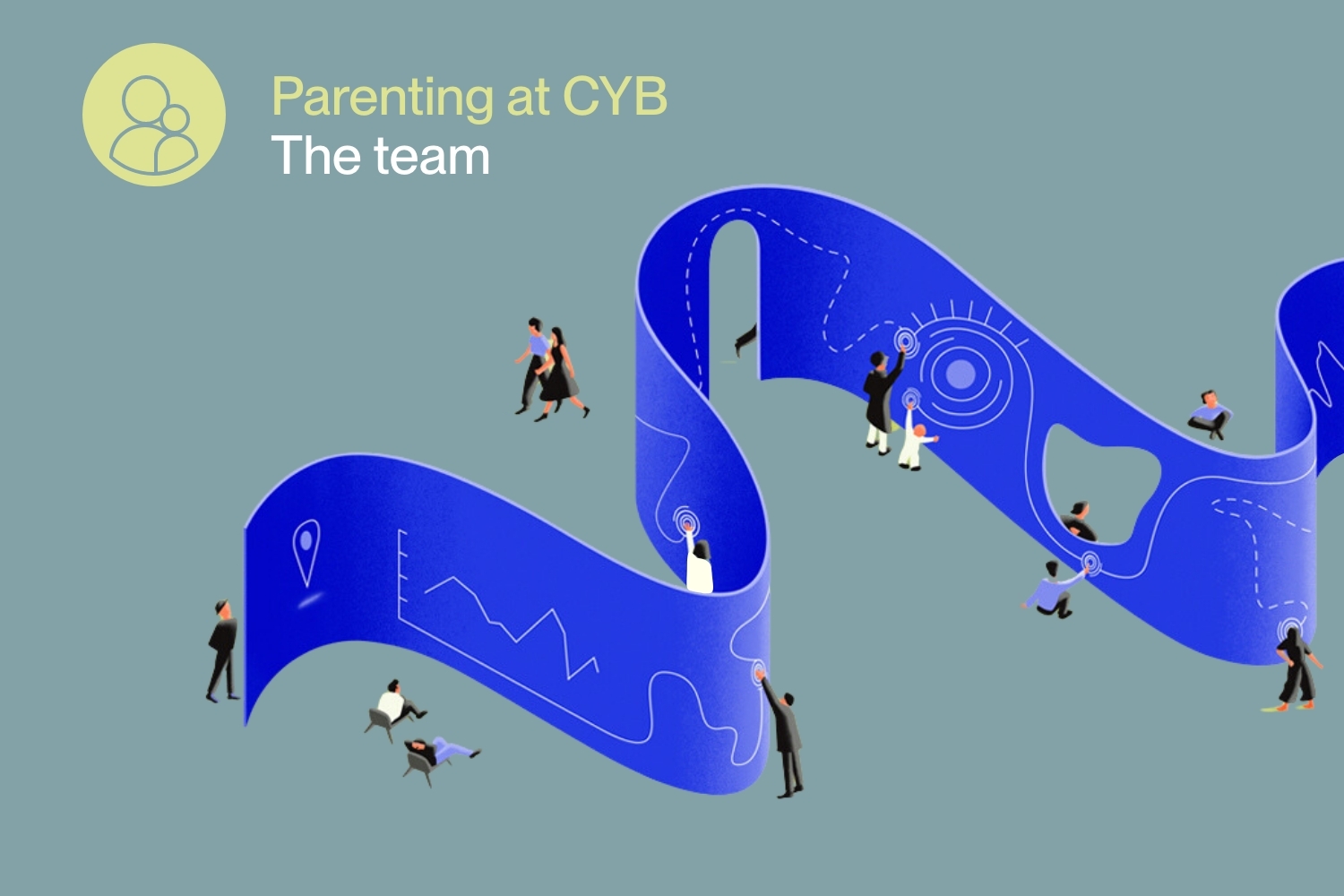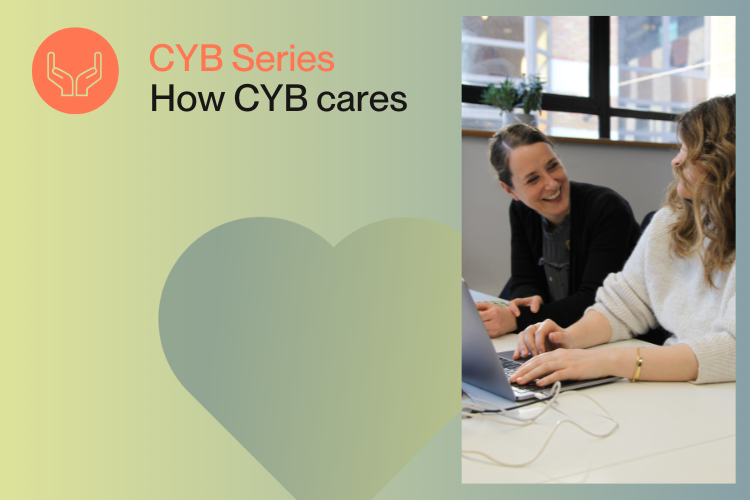
Five ways being a carer makes me a better content designer
I’m a full-time content designer and full-time carer for my son.
My son, now in his 20s, has a rare genetic condition called Fragile X Syndrome. Fragile X causes learning disability, high anxiety, communication problems, and autism-like characteristics that affect how an individual experiences and interacts with everything. He needs a high level of support and won’t ever live independently.
More importantly, he’s strong, resourceful, hilarious, thoughtful, and a massive Elvis fan. Being his carer and his champion is my lifelong project. It shapes my days, thoughts and priorities.
For a long time, when he was little, I couldn’t work much, so I worked and studied when my son was in school. It was hard for me to both establish a career and be a decent mum so, for a long time, I chose to be mum and worked when I could.
The way the pandemic changed attitudes towards working was a gift. The way flexible working and working from home were suddenly normal meant I could work without needing to sacrifice personal and family wellbeing.
This is when I started my career as a content designer.
I love my job, and my crazy-paved work path has given me experience in random areas – editing, book design, admin, customer service. But along with those, my other job as parent-carer, offers some bonus skills that definitely help me be a better designer.
1. I practise empathy. A lot.
Empathy isn’t just a trend or a ‘nice to have’ when you’re caring for someone whose brain functions differently to yours – it’s a daily practice. I can’t assume I understand what my son’s experiencing and he can’t easily communicate his needs or problems. He was never the kid who asked ‘why’ 100 times a day, or skillfully argued his case for staying up, going out, or eating ice-cream for breakfast. When my son wants something, if he’s hurting, or afraid, he cries, becomes aggressive or destructive or simply shuts down. Even as an adult.
None of us can fully experience things the way someone else does, but practising empathy (and it does take practice) means putting aside our own perceptions and ideas and choosing to understand the thoughts and needs of others instead. And in doing this, always trying to understand what people mean, what their behaviours might be communicating indirectly, not just hearing what they’re saying.
In user-centred design, we know we’re not our users. We don’t assume we know what their lives are like, or their motivations. So we create stories to help us drop our preconceptions and try to think like them. Until we test and observe, our users have no voice. And when they do speak, we listen but we also need to practise empathy to observe behaviour and understand the meaning behind their words.
What might my son’s tears mean when we’re trying to get dressed? Is he really just an awful human being trying to make my life difficult, or is he more likely tired or worried? Maybe he hasn’t understood what’s happening and needs more time to process. To help him, I watch, learn, try different approaches – what might he need from me today?
We need to clear our assumptions, observe, and see beyond what people are saying to gain a deeper understanding of how we might be able to help.
2. Flexible strategy is our safety net
Most days in our house, the ultimate aim is to do what has to be done without catastrophe. It’s the same for most people, I realise, but for me and my son, it’s even more of a tightrope walk that wobbles all too easily between success and collapse. The wrong tone of voice from me, or a lost shoe, and the day’s derailed.
To wring a bit more from the tightrope metaphor, our strategies are our safety net.
With any project, it’s important to think about the whole picture but that can feel like too much to process. Identifying smaller steps makes everything more manageable and helps to prevent overwhelm. What problems have we identified? What are our goals and priorities? And what resources do we have to achieve them?
With my son, I break down goals into manageable steps: getting out of bed; washing and dressing; breakfast; travelling to college.
We decide how we’ll achieve them, thinking of ways to overcome potential obstacles with tried and tested favourites: a visual schedule or emotion chart; breathing exercises and hugs; TV or a blast of Jailhouse Rock.
We need strategies that allow for flexibility and we respond to change – we can change tactics if we need to without derailing our whole morning.
Collaboration is important – between me and my son, and everyone else involved in his care. When he knows there’s a safety net, and feels that he can trust in whoever’s looking after him, it greatly reduces his anxiety.
And I think of this as I work – it’s so directly applicable to content design in an agile environment. You have a goal, and create a strategy to achieve that goal. Then you break it into smaller pieces, and decide what steps and resources you’ll use to achieve the smaller bits. If it's not working, you change your approach, but as long as you’re achieving something, you’re going in the right direction.
Collaborating and communicating with everyone is key to success. Everyone should know the goal, understand the steps, and be able to communicate change, building trust with each other that we’ve all got the same priorities.
3. I’ve engaged with A LOT of stakeholders
I wish I’d kept a record of the number of people that have been involved in my son’s care over the last 20 years. It’d run into the high 100’s.
But in working with all of these individuals and organisations, I’ve learned to think more about what I need to communicate to whom, and how, and what individual and organisational priorities and motivations might be.
Identifying stakeholders, analysing their needs and expectations and planning how to engage with them is the key to getting what everyone needs.
Is the social worker managing a huge caseload with strict outcome measures? Does the local authority need clear evidence to be able to stretch a tight budget? By doing my homework and presenting a solid argument for funding or services, I’ve become more likely to get my son what he needs.
In a work project, I’ve realised that resistance to change comes from a place of fear, or because of historical internal politics rather than someone simply not wanting to cooperate. It’s important to consider the motivation behind a reaction and adjust communication to address it.
If we get to know the people involved in a project, and understand what pressures they’re working under, we can choose how to work with them for a good outcome. Getting people on board involves communicating, building trust, and being clear about the benefits for everyone – whether it’s getting funding for a college place or building a well-designed digital service.
4. I know the impact of accessible design
Hopefully, everyone knows we should design and build digital services in a way that makes them accessible to as many people as possible. There are assessments, guidelines, best practices, and a genuine joy that comes from knowing we’ve done our best. For a lot of designers, there’s so many ways to learn about accessibility but it remains an otherness – another ‘nice to have’. For me, it’s personal.
I’m painfully aware of the times my son has no hope of accessing the things he needs because they’re just not designed for someone like him. He can’t apply for a bus pass or interact with a banking app, or order something online if there’s a cryptic reCAPTCHA involved.
I’m also delighted when something’s been designed so well, he can use it effortlessly. For example, TV streaming services, self-serve supermarket checkouts and contactless card payment. Thoughtful, accessible design, without exception, works better for all of us, regardless of our abilities and needs.
Clear, concise communication – whether it's giving an instruction, or simply providing reassurance, the ability to convey information clearly and kindly is crucial. This skill translates directly to content design, where clarity and simplicity are key to including everyone.
5. I see how deeply inequity runs
While inequality is the difference between individuals or population groups, inequity refers to differences that are unnecessary and avoidable.
My son is just like me and you. He wants what everyone wants: a purpose; friends to connect with; money to buy stuff; a voice. This year’s Learning Disability Week theme is, ‘Do you see me?’. It challenges us all to think about the barriers disabled people face when trying to live their best lives, as well as the benefits to everyone of having a diverse society. Find out more about Learning Disability Week at Mencap.
When you start looking, you start seeing how the world is often set up to force the most vulnerable people to work at just existing. Disabled is used as an adjective but it’s also an activity. My son is dis-abled often, by poor funding decisions, ignorance, and apathy, and bad design
When we’re designing something, we must make sure the solution isn’t worse than the problem. Good design should be invisible, whatever the needs (except to other designers who are allowed to do a little clap when it works well, obviously).
My son just wants things to happen so that he can get on with his life – like the rest of us! He’s not impressed with design or usability or accessibility, any more than any of us should be. He won’t thank me for my excellent strategies and he shouldn’t - they’re a way of him doing what he needs to do so that he can get on with his rich, delightful day of thinking Elvis thoughts and laughing with his friends.
I take this into my job. You can too, by:
understanding everyone basically wants the same things as you
taking time to properly listen to others’ experiences
being the person who champions accessibility and inclusion
never dis-abling anyone with your actions or choices
We can all develop skills from the most unexpected situations. I never thought I’d get so many transferable skills from being a parent. Caring for someone often involves navigating unexpected challenges, and adapting to new situations with patience and acceptance – all invaluable in a design role. Projects rarely go exactly as planned – in life and in work – and being able to adapt quickly, communicate well, and maintain a positive outlook is surely the way to go.



